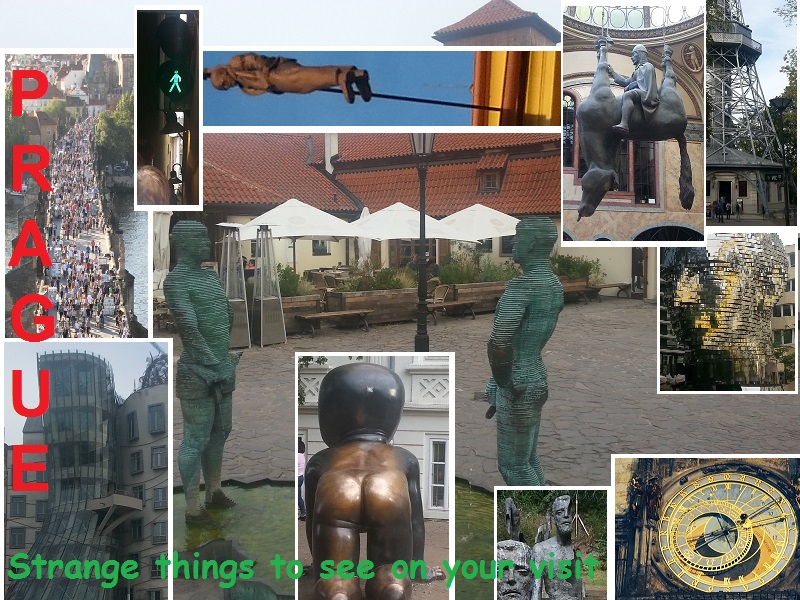Obviously, there are a lot more than 12 weird and wonderful things to see in Prague. It’s a big city that consists of 10 districts (Prague 1 — Prague 10). You could stay there a week and still only scratch the surface when it comes to things to see and do and some of the works of art on display around the City are incredibly unusual and creative because Prague is the playground of the Czech sculptor David Černý.
All of the items on this list of things to see in Prague are in Prague 1. Anyone with a normal level of fitness should be able to stroll around the district on foot and see them all within just a few hours and Prague is such a beautiful and city there will be plenty of stunning architecture and other interesting things to see along the way.
1. St Wenceslas Statue in Wenceslas Square
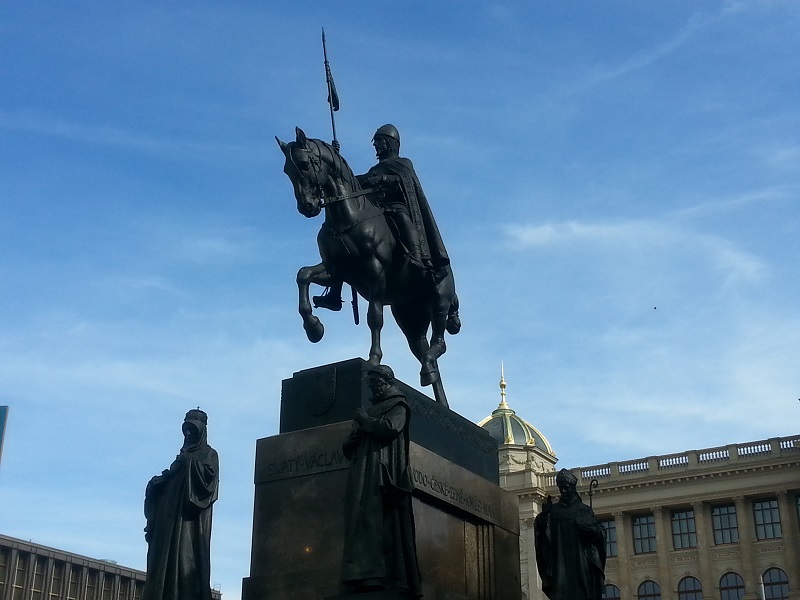
The St Wenceslas Statue in Wenceslas Square may not be weird, but it’s a very impressive statue.
Wenceslas (901—935) was the Duke of Bohemia but his short rule ended when his younger brother assassinated him. After his death, Wenceslas was declared to be a king, elevated to sainthood, and became the patron saint of the Czech state. The  popular carol “Good King Wenceslas” pays homage to his reputation for goodness.
popular carol “Good King Wenceslas” pays homage to his reputation for goodness.
The St Wenceslas statue in Wenceslas Square was sculpted by Josef Václav Myslbek. He began work on the statue in 1887 and completed it in 1924. As you are passing through the square take a good look at the statue of St Wenceslas and commit it to memory because it inspired the creation of the strange statue that’s #2 on this list of things to see in Prague.
2. Statue of St Wenceslas Riding an Upside-Down Dead Horse
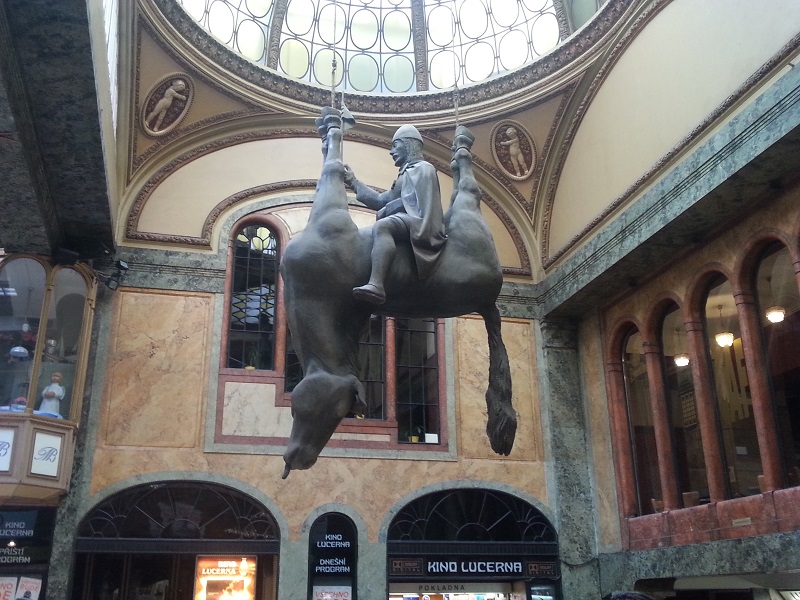 This unusual work of art is situated in the Lucerna Passage. Like a lot of the weird and wonderful things to see in Prague, the statue of St Wenceslas Riding an Upside-Down Dead Horse is the creation of David Černý and it’s only around a four-minute walk from the statue in Wenceslas Square it’s intended to ridicule.
This unusual work of art is situated in the Lucerna Passage. Like a lot of the weird and wonderful things to see in Prague, the statue of St Wenceslas Riding an Upside-Down Dead Horse is the creation of David Černý and it’s only around a four-minute walk from the statue in Wenceslas Square it’s intended to ridicule.
Lucerna Passage is a system of indoor passages that run underneath the Nouveau Lucerna Palace. Černý’s surreal sculpture can be seen dangling below the Palace’s central atrium
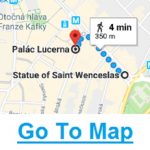 Although it looks like it may be made of stone or metal, the statue of St Wenceslas Riding an Upside-Down Dead Horse is actually made of polystyrene and it’s been hanging in the Luncerna passage since 2000. Černý enjoys shocking people so the sculpture is pretty typical of his work, but he’s never explained what inspired him to create it.
Although it looks like it may be made of stone or metal, the statue of St Wenceslas Riding an Upside-Down Dead Horse is actually made of polystyrene and it’s been hanging in the Luncerna passage since 2000. Černý enjoys shocking people so the sculpture is pretty typical of his work, but he’s never explained what inspired him to create it.
It’s interesting to take a stroll through the passages below Luncerna Palace because they form a kind of shopping arcade. You can also gain access to the Lucerna Theater from the passages underneath the Nouveau Lucerna Palace.
3. Rotating Sculpture of Franz Kafka’s Head
Franz Kafka was (1883-1924) was born in Prague and is recognized as being one of the most influential writers of the 20th Century. David Černý’s rotating head sculpture is a little different from his other creations because it’s not actively poking fun at the great writer or anyone else.
The 39-ton sculpture is less than a 10-minute walk from his upside down horse in the Lucerna Passage. The incredible creation is situated outside the Quadrion Shopping Center. It stands 11 meters tall and consists of 42 movable plates of stainless steel. 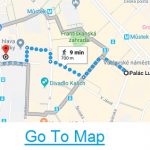 When all the tiers are lined up correctly it the sculpture resembles Franz Kafka’s head. When the plates are in motion, which is most of the time, the head is in a constant state of metamorphosis which looks all the more incredible due to the way the light reflects from the plates.
When all the tiers are lined up correctly it the sculpture resembles Franz Kafka’s head. When the plates are in motion, which is most of the time, the head is in a constant state of metamorphosis which looks all the more incredible due to the way the light reflects from the plates.
Working behind the scenes, an electric motor and 1 km of cables power the head and make the motion possible. When it comes to weird and wonderful things to see in Prague, the Rotating Sculpture of Franz Kafka’s Head takes some beating.
4. The Astronomical Clock
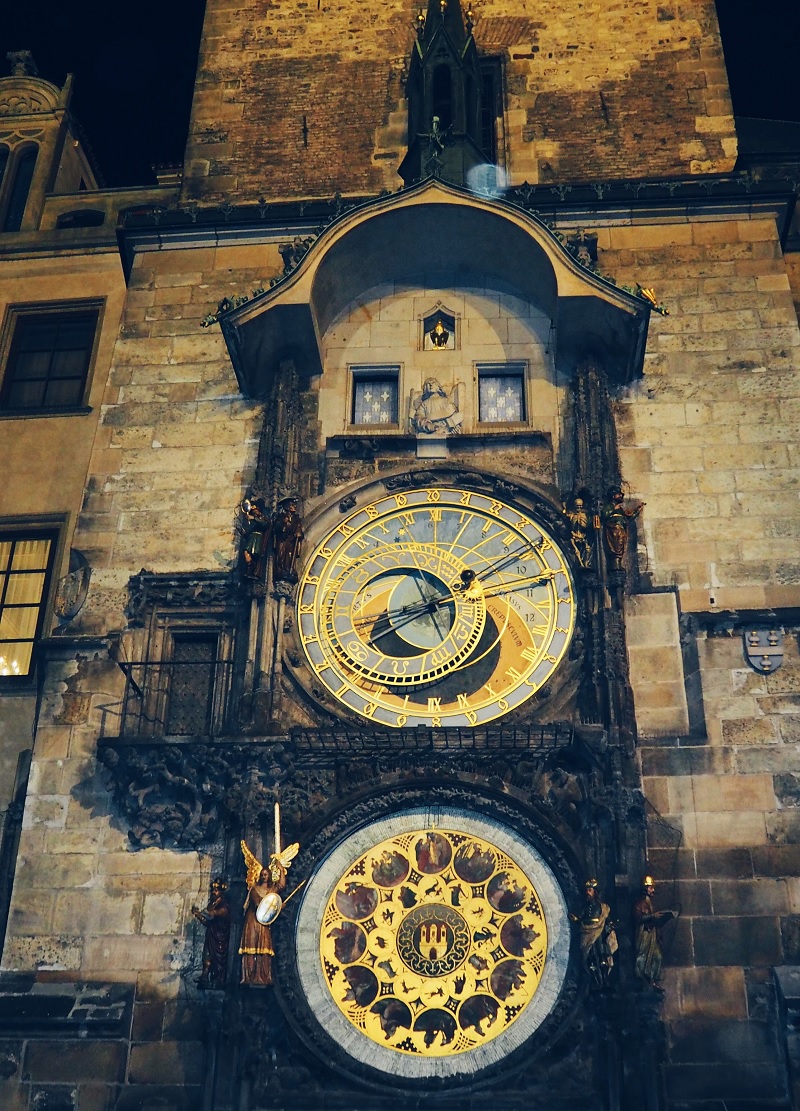 The Prague astronomical clock is mounted on one of the walls of the Old Town Hall in the Old Town Square. The oldest parts of the mechanism and the astronomical dial were created in 1410 by the imperial clockmaker Mikuláš of Kadaň and the scientist/Catholic priest Jan Šindel.
The Prague astronomical clock is mounted on one of the walls of the Old Town Hall in the Old Town Square. The oldest parts of the mechanism and the astronomical dial were created in 1410 by the imperial clockmaker Mikuláš of Kadaň and the scientist/Catholic priest Jan Šindel.
The clock mechanism consists of three main components:
- An astronomical dial that represents the position of the sun and moon in the sky and displays several other astronomical details.
- Statues of several Catholic saints (standing on either side of the clock).
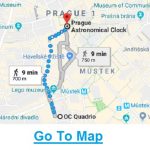 The Walk of the Apostles. This is an hourly show, powered by clockwork, that includes figures of the Apostles and other moving sculptures, including a skeleton that represents of Death, striking out the hour.
The Walk of the Apostles. This is an hourly show, powered by clockwork, that includes figures of the Apostles and other moving sculptures, including a skeleton that represents of Death, striking out the hour.
Easily one of the most popular tourist attraction in the city, the Prague astronomical clock is only a 9-minute walk from the Rotating sculpture of Franz Kafka’s head. The quickest route (as shown on the map to the right) goes past the Prague Sex Machines Museum, and although this type of venue is unlikely to appeal to everyone this somewhat unorthodox museum always looks busy.
5. Man Hanging Out
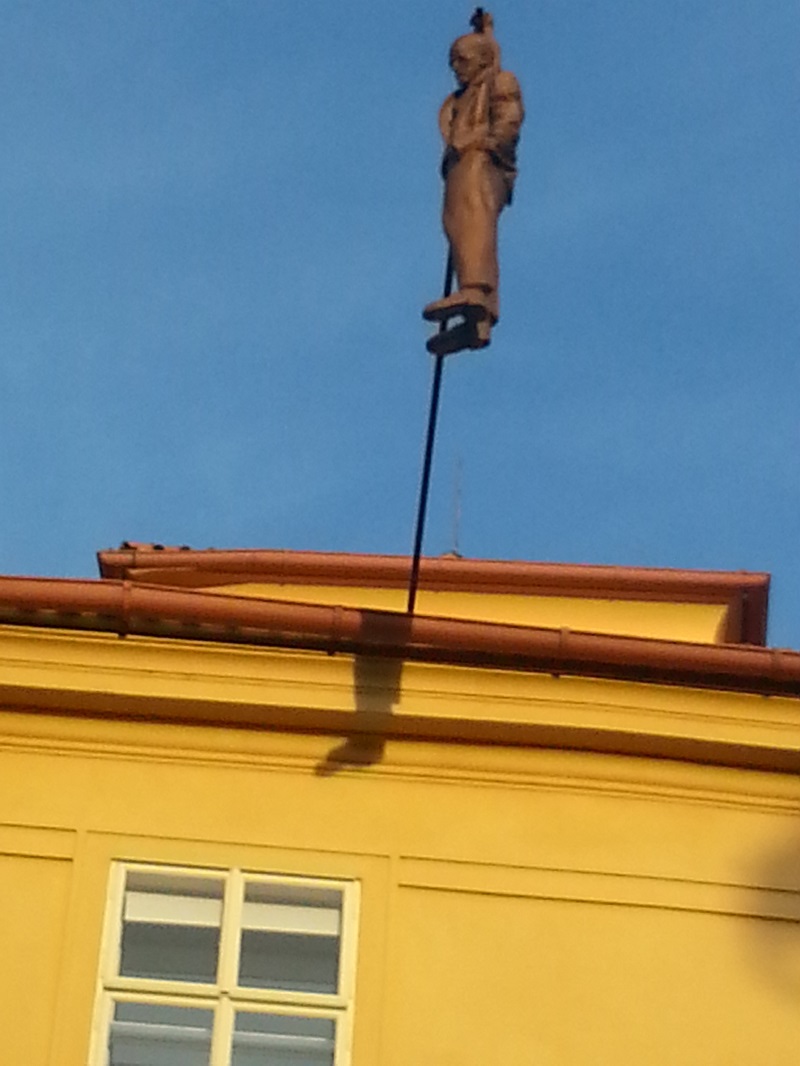 Another David Černý creation, Man Hanging Out is another one of the more interesting things to see in Prague but it’s an incredibly easy work of art to miss. If you don’t happen to look up or see other people looking up and follow their eyes, you may walk directly underneath the sculpture and never see it.
Another David Černý creation, Man Hanging Out is another one of the more interesting things to see in Prague but it’s an incredibly easy work of art to miss. If you don’t happen to look up or see other people looking up and follow their eyes, you may walk directly underneath the sculpture and never see it.
Its located at the point where Skorepka Street meets Husova Street. Walking at a normal pace from the Astronomical Clock you should be able to get there in five minutes.
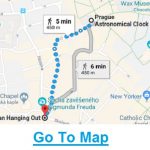 Man Hanging Out is a representation of Sigmund Freud and it’s hard not to love the way Freud hangs above the street, holding onto the bar that supports him with one hand while the other hand is plunged deep into his trouser pocket.
Man Hanging Out is a representation of Sigmund Freud and it’s hard not to love the way Freud hangs above the street, holding onto the bar that supports him with one hand while the other hand is plunged deep into his trouser pocket.
Apparently, the sculpture is meant to make a statement about intellectualism in the 20th Century and, at first glance, it’s so lifelike some people who look up and see it gasp because they think they are about to witness a suicide.
6. The Dancing House
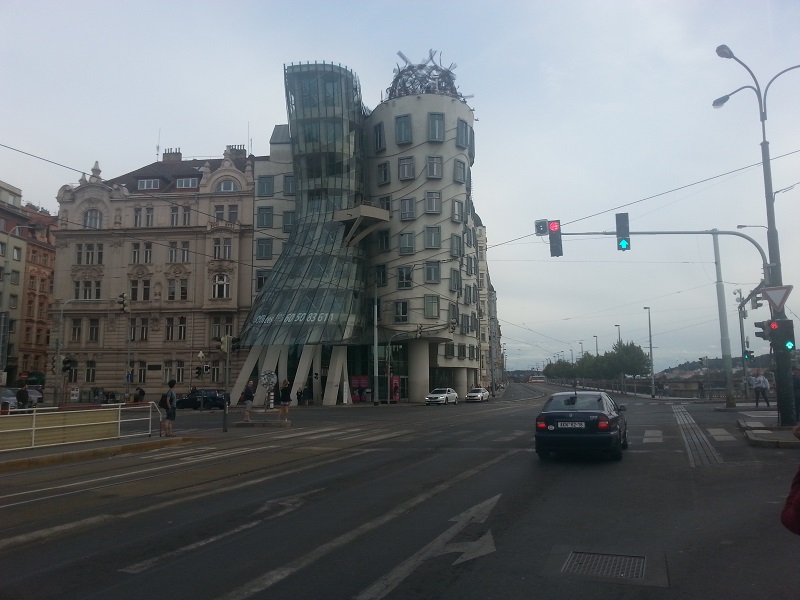 Although the name makes it sound like a dance school, the Dancing House, or Fred and Ginger as it’s sometimes called, is the nickname Nationale-Nederlanden (NN) building in Prague. NN is one of the largest insurance and asset management companies in the Netherlands and you may be surprised to learn the Dancing House is a relatively new building.
Although the name makes it sound like a dance school, the Dancing House, or Fred and Ginger as it’s sometimes called, is the nickname Nationale-Nederlanden (NN) building in Prague. NN is one of the largest insurance and asset management companies in the Netherlands and you may be surprised to learn the Dancing House is a relatively new building.
The property that originally stood on the site was destroyed in 1945 by US bombs. The plot stood empty for several decades then, in 1992, NN decided to build on the land and recruited the services of the Croatian-Czech architect Vlado Milunić and the Canadian-American architect Frank Gehry. The Dancing House is the result of their collaboration. It’s designed to resemble a dancing couple and is now considered one of the main things to see in Prague.
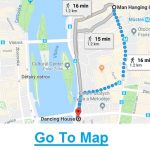 If you are having difficulty seeing the dancing couple, notice how the house on the left appears to have a waist and the balcony midway up could be seen to represent an arm around it.
If you are having difficulty seeing the dancing couple, notice how the house on the left appears to have a waist and the balcony midway up could be seen to represent an arm around it.
This article is about weird and wonderful things to see in Prague and the design and structure of the Dancing House are so unusual it ticks both those boxes. You’ll find the house down near the river. It’s just over a kilometre from David Černý’s Man Hanging Out sculpture and the walk shouldn’t take you longer than 15—20 minutes.
7. Memorial to Victims of Communism
 The next entry on this short list of things to see in Prague has a deeper significance than the one mentioned so far. It’s a collection of seven bronze figures that were created as a memorial to victims of communism. The figures stand, one behind the other on a set of stairs in the park at the base of Petřín Hill.
The next entry on this short list of things to see in Prague has a deeper significance than the one mentioned so far. It’s a collection of seven bronze figures that were created as a memorial to victims of communism. The figures stand, one behind the other on a set of stairs in the park at the base of Petřín Hill.
Although the statue standing on the first step is complete, the ones behind it become increasingly more damaged and decayed. The second statue has large open cracks in its head and body. The third is missing a portion of the left-hand side of its head, along with its left shoulder and an arm. The last statue in the row has very little of it left at all.
The Memorial to Victims of Communism is the result of a collaboration between the Czech sculptor Olbram Zoubek and architects Jan Kerel and Zdeněk Holzel. It symbolizes the damaging effects Communism had on political prisoners.
If you visit the memorial, pay attention to the bronze strip that runs up the middle of the steps. It shows the estimated number of people affected by communism:
- 205,486 arrested
- 170,938 forced into exile
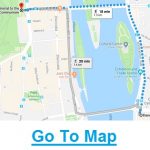
- 4,500 died in prison
- 327 shot trying to escape
- 248 executed
The Memorial to Victims of Communism is at the other side of the river from the Dancing House. Reaching it will involve a 20-minute walk, but there are plenty of places you can stop for refreshment along the way.
8. The Petřín Lookout Tower
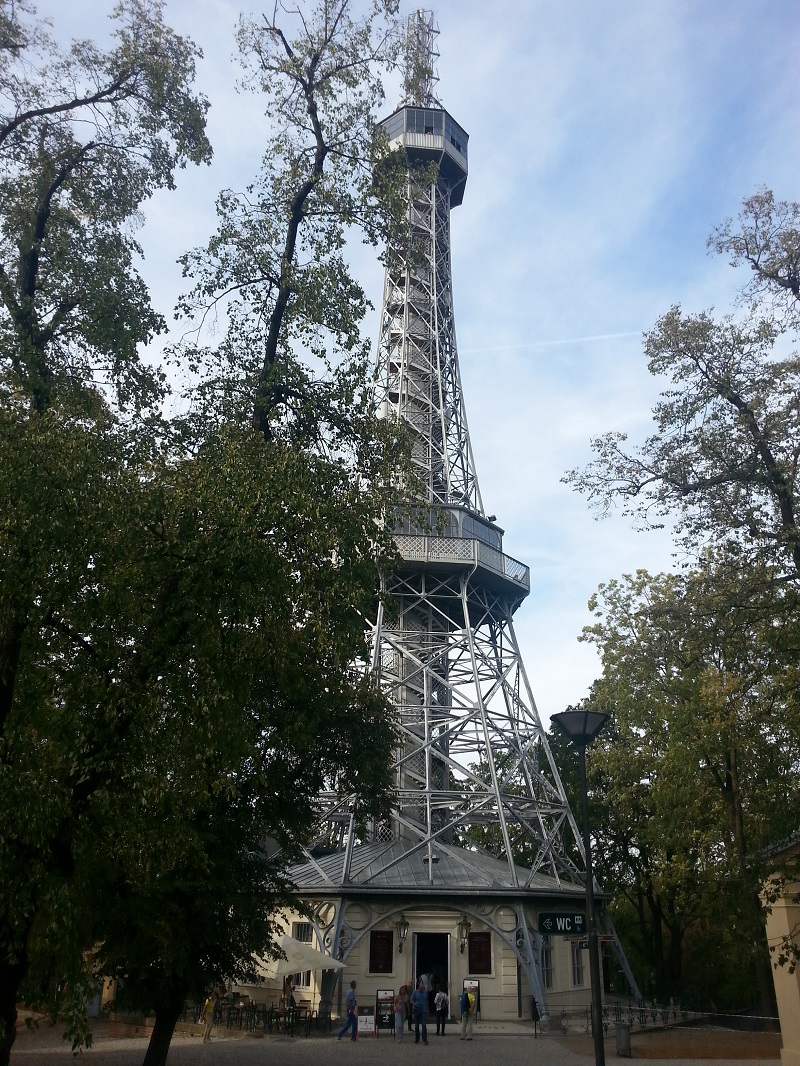 The Memorial to Victims of Communism is at the bottom of Petřín Hill. The Petřín Lookout Tower is at the top. It’s a 63.5-metre-tall construction designed to mimic the French Eifel Tower and those who wish to do so can climb the central spiral staircase to the observation platforms in the middle of the tower and at the top. The entrance fee is 150 Kč (€5.87), but there are discounts for the elderly and it’s also possible to buy a family ticket. You can get further information about the opening hours and ticket price from the official Prague tourist website.
The Memorial to Victims of Communism is at the bottom of Petřín Hill. The Petřín Lookout Tower is at the top. It’s a 63.5-metre-tall construction designed to mimic the French Eifel Tower and those who wish to do so can climb the central spiral staircase to the observation platforms in the middle of the tower and at the top. The entrance fee is 150 Kč (€5.87), but there are discounts for the elderly and it’s also possible to buy a family ticket. You can get further information about the opening hours and ticket price from the official Prague tourist website.
Petřín Lookout Tower was constructed in 1891. Two years, previously, a club of Czech tourists visited Paris, saw the Eifel Tower, became inspired to create their own version and began collecting the necessary funds on their return home. Whey they 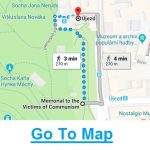 had enough money construction commenced and was completed in just four months.
had enough money construction commenced and was completed in just four months.
Although it’s possible to walk up to Petřín Lookout Tower, and a fit person should be able to do it in 20—30 minutes, there is no need for anyone to do so if they do not wish to. The people who constructed the tower also built a funicular railway to transport people up and down the hill. The funicular terminal at the bottom of the hill is less than a five-minute walk from the Memorial to Victims of Communism.
9. Crawling Babies in Kampa Park
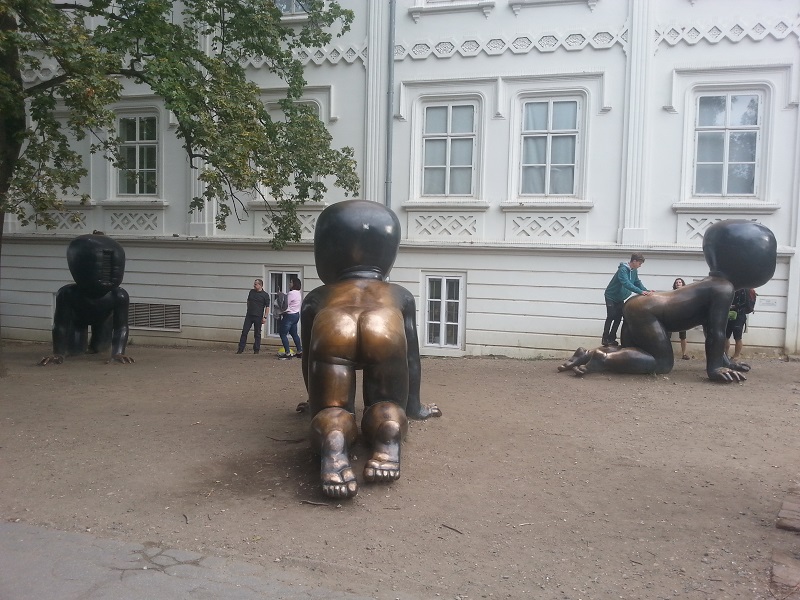 After visiting Petřín Lookout Tower, if you return to the funicular station at the bottom of the hill and then take a leisurely stroll to Kampa Park, you will find one of the most unusual and popular tourist attractions in Prague. Just to the side of Museum Kampa (a museum of modern art from central Europe), there are three large bronze statues of crawling babies.
After visiting Petřín Lookout Tower, if you return to the funicular station at the bottom of the hill and then take a leisurely stroll to Kampa Park, you will find one of the most unusual and popular tourist attractions in Prague. Just to the side of Museum Kampa (a museum of modern art from central Europe), there are three large bronze statues of crawling babies.
The Crawling Babies in Kampa Park are another one of David Černý’s creations and the posture and shape of the babies are perfect. They really do look like babies at play. However, the big bronze babies have no faces. They have something else instead. The features of the babies defy description and look a little like an air vent has been bashed into the area where their faces should have been.
Kampa Park is lovely. Lots of people head there to hang out with friends or visit Museum Kampa and the Crawling Babies are pretty hard to miss, so it’s hard to find a time when there is nobody crawling on top of the sculptures or posing for pictures beside them.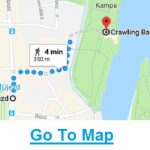
Although it seems likely that many of the tourists posing for “baby pictures” headed to the park because visiting the bronze babies was already on their list of things to see in Prague, the surprised look on the faces of some people passing by suggest they stumbled upon the display by accident. You should be able to walk from the Petřín funicular station to the Crawling Babies in less than five minutes.
10. The Charles Bridge
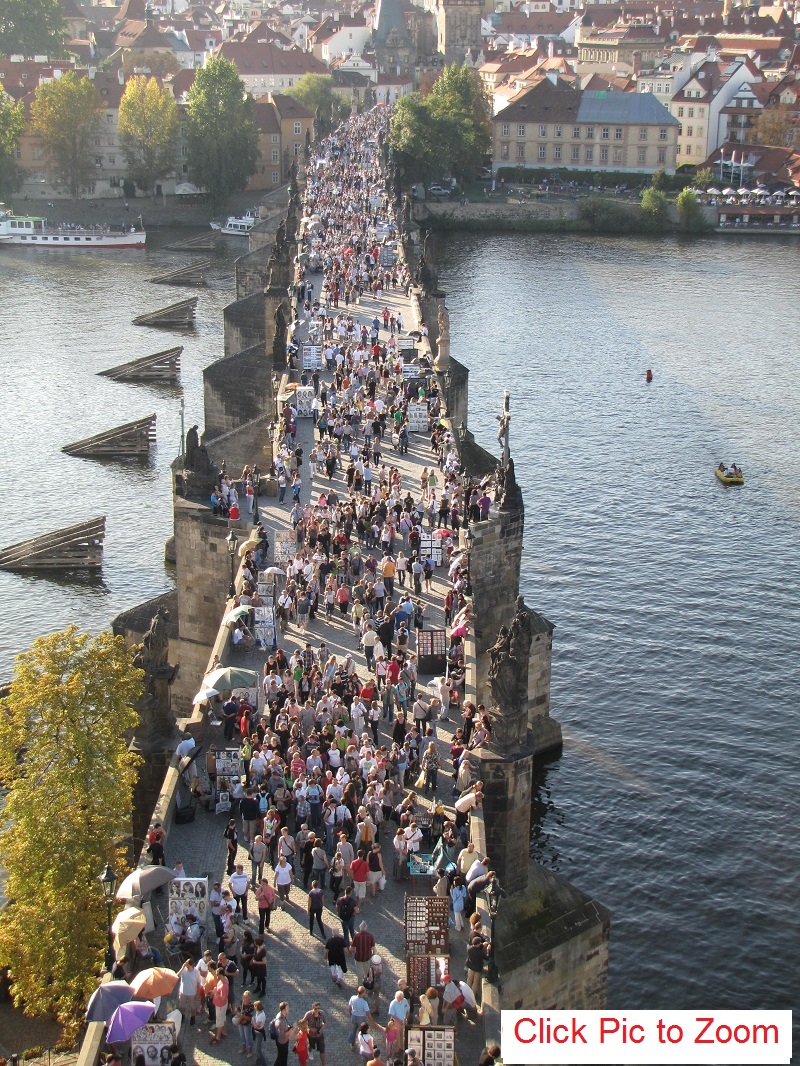 There are lots of bridges that cross the Vltava river in Prague. The Charles Bridge is oldest and of them and, although there is no shortage of things to see in Prague, the Charles Bridge is easily one of the most visited sights in the city.
There are lots of bridges that cross the Vltava river in Prague. The Charles Bridge is oldest and of them and, although there is no shortage of things to see in Prague, the Charles Bridge is easily one of the most visited sights in the city.
Construction of the bridge began in 1357 and was completed by the beginning of the 15th century. It was not the first bridge to cross the river though. The Charles Bridge was a replacement for the earlier Judith Bridge (1158—1172), which was damaged by a flood in 1342.
The Charles Bridge is only for pedestrians and it can be incredibly busy during the week. On weekends and holidays it’s busier still and walking amidst so many people can be a very slow process.
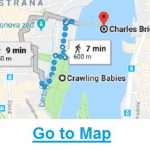 Thirty statues line the side of the bridge and tourists love to have their picture taken near them. However, many of the people who stop strike a pose or snap pictures are likely to be blissfully unaware the statues are only a few decades old. Beginning in 1965, all the original statues were carefully removed from the Charles Bridge and placed in museums.
Thirty statues line the side of the bridge and tourists love to have their picture taken near them. However, many of the people who stop strike a pose or snap pictures are likely to be blissfully unaware the statues are only a few decades old. Beginning in 1965, all the original statues were carefully removed from the Charles Bridge and placed in museums.
The walk from David Černý’s Crawling Babies to the Charles Bridge should take around seven to nine minutes.
11. The Narrowest Street in Prague
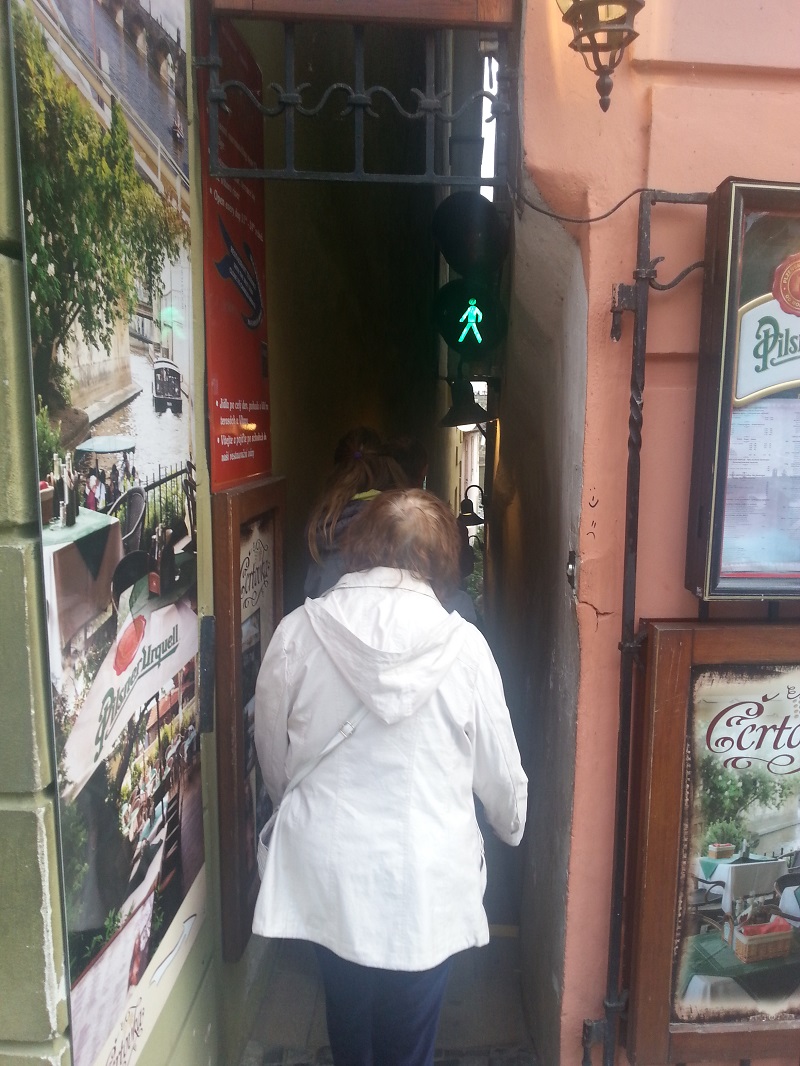 The last item on this list of weird and wonderful things to see in Prague is a rather unusual moving sculpture called “Piss”. It’s located on the other side of the river from the Crawling Babies and, after crossing the Charles Bridge, in order to reach Piss, you have to walk past the narrowest street in Prague. It’s not by any means one of the most interesting things to see in Prague, and it certainly isn’t worth seeking it out especially but, if you are passing, it’s certainly worth a look.
The last item on this list of weird and wonderful things to see in Prague is a rather unusual moving sculpture called “Piss”. It’s located on the other side of the river from the Crawling Babies and, after crossing the Charles Bridge, in order to reach Piss, you have to walk past the narrowest street in Prague. It’s not by any means one of the most interesting things to see in Prague, and it certainly isn’t worth seeking it out especially but, if you are passing, it’s certainly worth a look.
Although it’s called the narrowest street in Prague, the word “street” makes it sound a lot grander than it is. It’s actually just an alleyway between two buildings that leads down to a riverside restaurant.
Narrow though it may be, the truth of the matter is most people would walk past the alley without giving it a second glance if it wasn’t for the fact It’s fitted with a set of traffic lights. The idea is, the alley is allegedly so narrow pedestrians need to wait for the green man to appear before entering because the alley is not wide enough for two people to pass each other should they meet travelling in opposite directions.
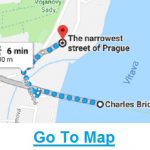 Despite the narrowness of the alley, there are plenty of other European alleyways that offer less room for people to pass. Prague’s narrowest street is 19.6 inches wide. According to the Guinness Book of World Records, the German town of Spreuerhofstrasse is home to the narrowest alley in the world. The alley is 3.8 meters long and measures just 12.2 inches at the narrowest point.
Despite the narrowness of the alley, there are plenty of other European alleyways that offer less room for people to pass. Prague’s narrowest street is 19.6 inches wide. According to the Guinness Book of World Records, the German town of Spreuerhofstrasse is home to the narrowest alley in the world. The alley is 3.8 meters long and measures just 12.2 inches at the narrowest point.
The Narrowest street in Prague is only around 400m from the Charles Bridge, so the walk should only take around six minutes or so.
12. Piss
The work of David Černý appears to dominate this list of things to see in Prague, but he’s a very industrious sculptor and most of his creations are so eye-catching they are hard to ignore. The aptly named “Piss” is another of his more controversial offerings. It features to bronze men standing in a pool that’s shaped like the Czech Republic. The two statues stand facing each other. Each one mirrors the other with one hand on its hip and the other on its metal penis. Both statues are busy pissing into the pool at their feet.
Like the Černý’s moving head sculpture, Piss is made all the more striking by the fact that it’s a work of art in motion. Both statues consist of three sections, the smallest of which is around the hips. This section rotates to the left and right while the statues simultaneously lift their penises up and down. It’s an incredibly amusing display and many visitors flock to the side of the pool to have their pictures taken next to the two pissing statues.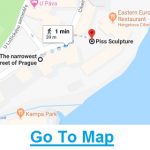
When it was first installed in 2004, Piss was a nice shiny bronze colour, but more than a decade of pissing in the wind and rain has caused the metal to turn green.
You’ll find Piss installed outside the Franz Kafka Museum. That’s only a minute’s walk from the Narrowest Alley in Prague.
– – – – –
– – –
– – –
– – – – –
